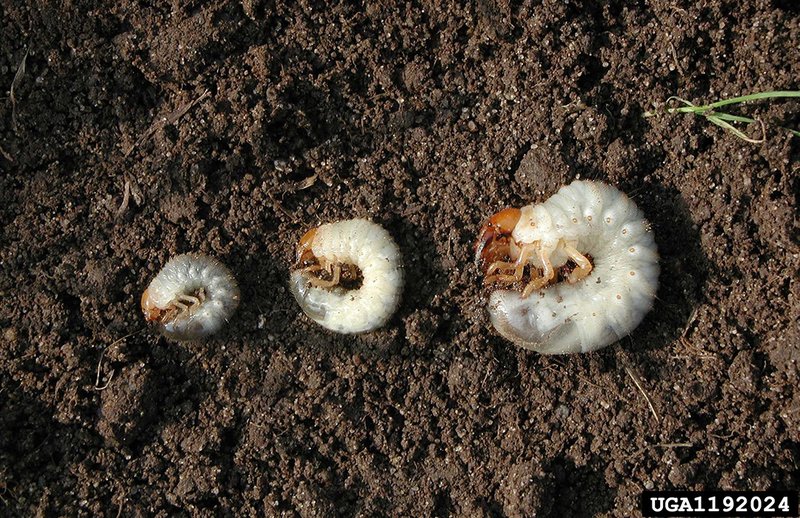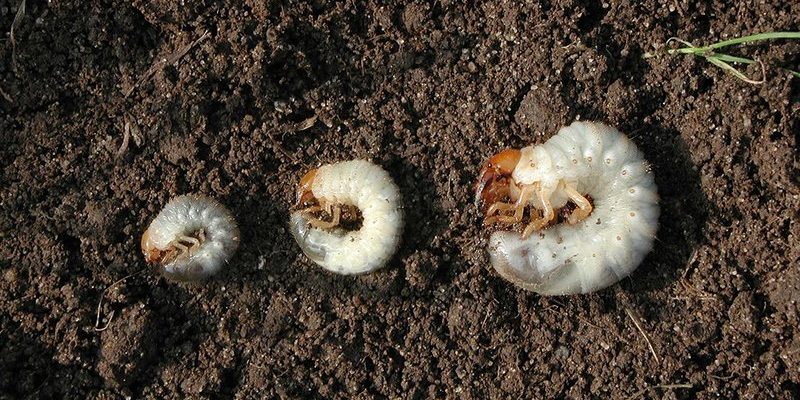
Let’s break it down. White grubs generally refer to the larvae of various beetles, and they can cause quite a bit of trouble if they’re not controlled. Depending on the species, they can feast on your roots, causing damage to grass and plants. Understanding whether all white grubs are the same species is key to figuring out the best way to manage them. So, grab a cup of coffee, and let’s dig into all the details!
What Are White Grubs?
White grubs are the larvae of beetles, and they typically have a C-shape, three pairs of legs, and a light-colored body. You might spot them under the soil or among the roots of plants. These little critters often go unnoticed until they create a problem, like brown patches on your lawn or wilted plants.
Most commonly, they belong to families like the Scarabaeidae (scarab beetles) and the Melolonthidae (cockchafers). The life cycle of these grubs usually consists of an egg stage, larval stage (that’s the grub part), a pupal stage, and finally adulthood as a beetle. Each species may have its own growth rate and habits, which can determine how they affect gardens and lawns.
If you’re wondering how to identify them, look for characteristics like the size, shape, and even their behavior. Some grubs stay close to the surface, while others burrow deeper in the soil. Knowing what you’re dealing with can help you choose the right approach for management.
Common Types of White Grubs
Let’s talk about the most common types of white grubs you might encounter. Some of the usual suspects include:
- Japanese Beetle Grubs: These guys are particularly well-known for damaging lawns. They can be light to dark tan and usually grow up to an inch long.
- June Beetle Grubs: Larger and bulkier, these grubs can reach about 2 inches in length. They tend to have a more rounded body shape.
- Masked Chafers: These grubs are about an inch long and have a more distinct, darker coloration. They’re commonly found in residential areas.
Although they’re all called white grubs, the differences in size, shape, and behavior are significant. For instance, Japanese beetle grubs are known to be particularly ravenous, wreaking havoc on grass roots. Meanwhile, June beetles are also destructive, but they often show up later in the season. Understanding these differences can help you figure out how to tackle the issue effectively.
Are All White Grubs the Same Species?
No, all white grubs are not the same species, and this is where it gets interesting. While they share some similarities, each species has distinct traits and behaviors that can influence how they affect your yard.
For starters, the **life cycle** of each grub species varies. Some might be active in spring, while others hatch in late summer and fall. This means their presence in your garden can come at different times, which is essential for effective pest management.
Moreover, their **food preferences** can differ widely. For example, Japanese beetle grubs prefer lush, tender grass roots, while June beetle grubs might target older grass types. So, recognizing the species can help you adopt specific strategies, whether it’s preventive measures or targeted treatments.
Impact on Gardens and Lawns
The impact of white grubs on your garden can be quite significant. When they feast on roots, the effects can range from brown spots in your lawn to wilting plants and stunted growth.
For homeowners, this can mean reduced aesthetic appeal and possible financial loss if plants don’t thrive. Lawns with high grub populations can look unhealthy, making them less inviting. In some cases, a heavily infested lawn may require more drastic measures, like reseeding or re-sodding, which can be costly.
So, what can you do if you find white grubs? Regular inspections of your lawn and garden can help catch any issues early on. If you notice signs of grubs, knowing which type you’re dealing with can affect your management options.
Identifying White Grubs
Identifying white grubs is crucial for proper management. Here’s a simple approach to help you recognize what’s in your garden:
1. **Visual Appearance:** Look for bodies that are C-shaped, soft, and white with tiny legs.
2. **Size:** Keep in mind the size can differ; some grubs are larger than others.
3. **Behavior:** Observe where they are found. Are they close to the surface, or do they burrow deep?
4. **Time of Year:** Some grubs are seasonal and may appear at different times, so watch for that.
You might even want to gently dig up a few patches of soil to see what lives below the surface. Just be careful not to disturb any beneficial organisms! If you’re unsure, take a picture and get a second opinion from a local gardening expert or extension service.
Managing White Grubs
Here’s the thing: managing white grubs can be tricky, but it’s definitely doable with the right approach. Here are some effective methods you can consider:
- Natural Predators: Encourage birds, beneficial nematodes, and other predators that naturally feast on grubs.
- Neem Oil: This is a natural insecticide that can deter grubs without harming beneficial insects.
- Insecticides: If the infestation is severe, you might consider chemical options. Just be sure to follow the instructions carefully to avoid harming other wildlife.
Timing is also critical. Applying treatments early in the season, when grubs are small and close to the surface, can yield better results.
In conclusion, while all white grubs might share a few characteristics, they are not all the same species. Each type has its traits, behaviors, and preferred habitats, which makes understanding them essential for effective management. By recognizing these differences, you can tackle white grubs in your garden more efficiently, protecting your plants and grass from potential damage.
So, the next time you spot a white grub, remember—you’re not just looking at a generic pest. You’re observing a unique player in your ecosystem. Stay curious and proactive, and your garden will thank you!

